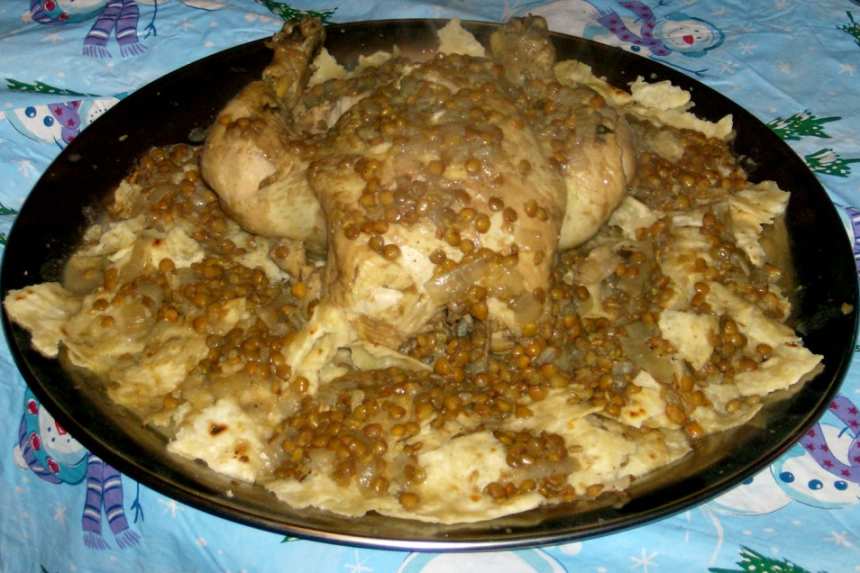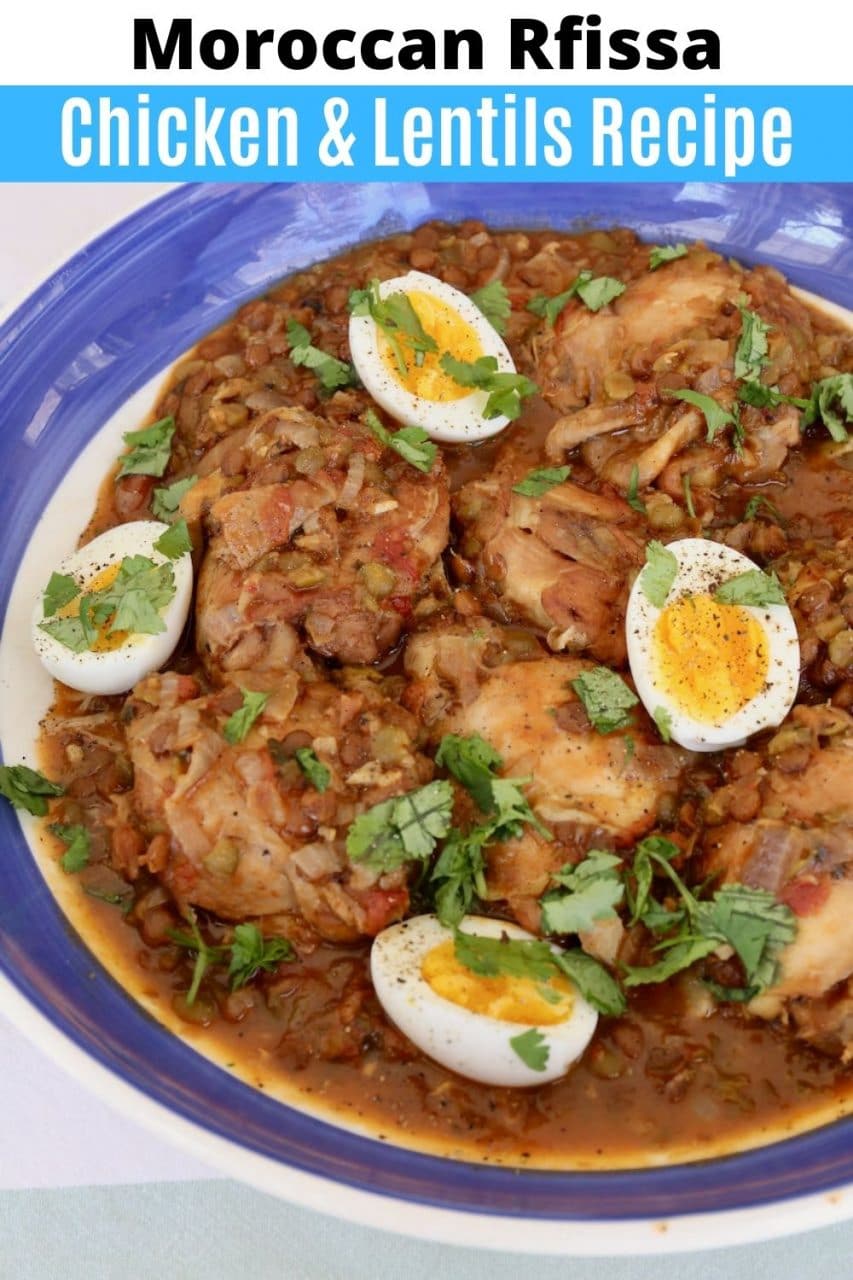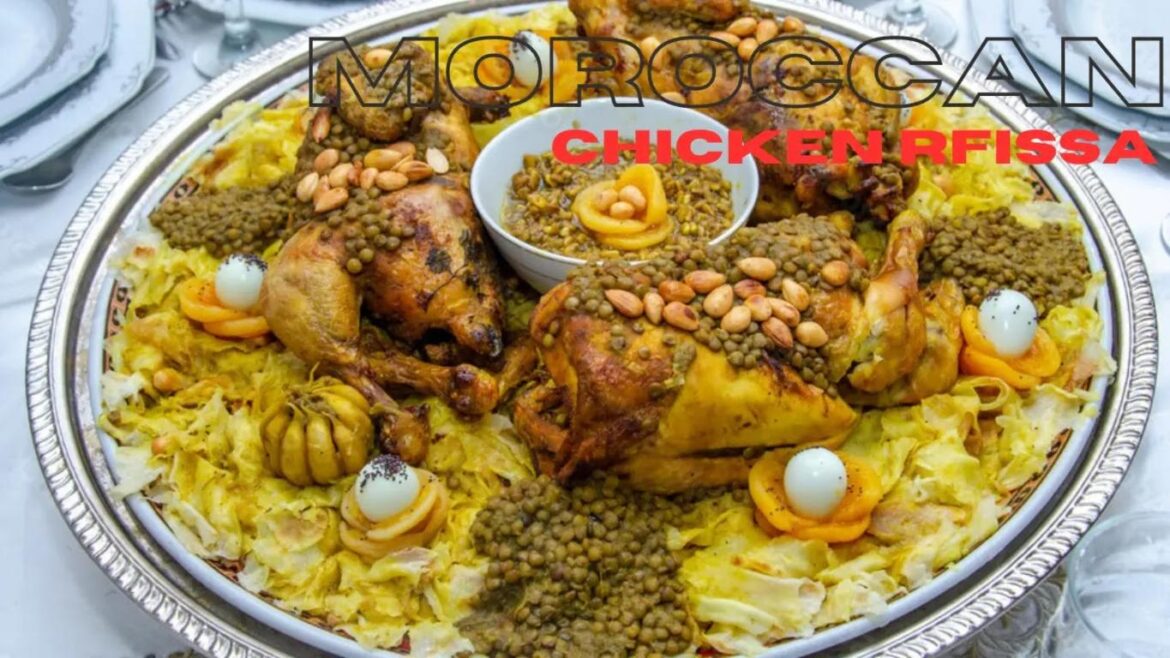Understanding the Essence of Rfissa
Rfissa, at its heart, is more than simply a stew; it’s a deeply ingrained part of Moroccan culinary heritage, a dish brimming with symbolism and tradition. To truly appreciate Rfissa, one must understand its roots and the careful thought that goes into every component. It’s a testament to the resourcefulness of Moroccan cooks, utilizing humble ingredients—chicken, lentils, onions—to create a complex and profoundly satisfying meal. The dish’s origins trace back to tharid, a centuries-old Arab dish of stew and broth that provided sustenance and warmth, and its influence remains evident in Rfissa’s character. But Rfissa distinguishes itself through the addition of unique Moroccan spices and the meticulous layering of flavors, achieving a harmonious blend that’s both comforting and stimulating to the palate. Moroccan culinary traditions place great importance on slow cooking, allowing the flavors to meld and deepen over extended periods. This is particularly crucial in Rfissa, where the long simmer transforms the simple ingredients into something truly extraordinary. The choice of ingredients is also significant; the use of free-range chicken, often referred to as djaj beldi, is favored for its richer flavor and texture, while the lentils, traditionally soaked overnight, contribute to a creamy consistency. The inclusion of fenugreek, a key ingredient, is not accidental; it’s believed to promote lactation in nursing mothers, traditionally served during childbirth, and contributes significantly to the dish’s distinctive aroma. Fenugreek’s nutritional profile highlights its potent medicinal properties, further solidifying its role in this cherished dish. The careful layering of spices – Ras el Hanout, saffron, and countless others – is what truly elevates Rfissa. Ras el Hanout recipe exemplifies the complexity of this spice blend, showcasing how each ingredient contributes to the overall flavor profile. Finally, the act of sharing Rfissa—a communal experience—adds another layer of significance. It’s a dish meant to be enjoyed with family and friends, fostering connection and creating lasting memories. The social significance of food in Morocco emphasizes this shared eating experience as a cornerstone of Moroccan culture. The slow cooking process also is an important part of the Moroccan culinary culture. Slow cooking recipes exemplify the technique.
Gathering Your Ingredients: Aromatic Foundations
To truly unlock the depth of flavor in Moroccan Chicken Rfissa, the selection and preparation of your ingredients are paramount. It’s not simply about throwing components into a pot; it’s an art of layering aromas and building a complex foundation that will transform into a rich, soul-satisfying stew. Let’s begin with the heart of the dish – the aromatics.
First, you’ll need a generous quantity of onions, typically three large ones. These form the base of your flavor, mellowing and sweetening as they slowly caramelize. Slice them thinly – aiming for uniform pieces – to ensure even cooking and maximum flavor release. Consider the quality; the sweetness of the onions will greatly influence the final taste. The best onions for this dish are Vidalia or Walla Walla, known for their exceptional sweetness.
Next, we introduce the pungent and essential – ginger. A good thumb’s rule is about 1 teaspoon of freshly grated ginger. Fresh ginger is far superior to powdered, bringing a vibrant, sharp note that cuts through the richness of the stew. Don’t be shy! Fresh Ginger is a fantastic resource if you want to prepare your own ginger powder, as it provides the ultimate flavor.
Then there’s ras el hanout, the cornerstone of Moroccan spice blends. This isn’t just a spice; it’s a microcosm of Moroccan culinary heritage. Ras el Hanout usually contains a dozen or more spices, including cardamom, cloves, cinnamon, turmeric, saffron, and various peppers. A good quality ras el hanout will have a complex, layered aroma, and you can adjust the amount to your personal preference. Using a good brand is key, as cheaper blends often lack depth. The Spruce Eats provides a great breakdown of common ras el hanout ingredients and ratios, which you can use as a starting point.
Don’t overlook the importance of saffron. A tiny pinch – roughly 1 ½ teaspoons – of saffron threads, heated gently in a tablespoon of warm water, will impart a beautiful color and a subtle, floral aroma. Saffron is expensive, but it’s worth using a little to elevate the dish. Saffron Threads details how to properly bloom the threads to maximize their flavor.
Finally, a good quality olive oil – extra virgin, preferably – is crucial. Use about ½ cup to sauté the onions and to create a luscious base for the stew. Extra Virgin Olive Oil provides a clear explanation of different olive oil types and their uses.
Remember, quality ingredients contribute significantly to the final outcome. Take your time selecting each component, appreciating their individual characteristics and potential contributions to the overall harmony of the Rfissa. It’s about building layers of flavor, allowing each element to contribute its unique character to the rich and unforgettable stew. Cooking Light offers a great visual guide to layering flavors in a similar stew.
Marinating the Chicken: Building Flavor Depth
The true magic of Moroccan Chicken Rfissa, and indeed many of its complex and intensely flavored dishes, lies in the patient development of those flavors during the marination stage. It’s not simply about adding spices; it’s about allowing them to penetrate and meld with the chicken’s natural proteins, creating a depth of taste that’s truly extraordinary. The process typically begins with a generous application of the key spices – Ras el Hanout, a potent blend that’s a cornerstone of Moroccan cuisine, is almost always a core ingredient, offering a layered profile of aromas and tastes; turmeric adds its warm, earthy hue and subtle bitterness; and a substantial amount of ginger, lending a sharp, zesty dimension. However, the application of these spices isn’t uniform. Instead, they’re massaged deeply into the chicken’s flesh, paying particular attention to the areas where the muscle fibers are most dense – around the legs and breast – to ensure maximum flavor distribution.
Beyond the core spices, the marination also incorporates other elements that contribute to the dish’s characteristic complexity. Saffron, a prized spice often reserved for special occasions, is carefully crumbled and mixed in, imparting its distinctive aroma and subtle flavor. A generous amount of fenugreek seeds, soaked overnight and then drained, is crucial. These seeds add a unique, slightly bitter, and subtly sweet note that’s almost impossible to replicate exactly. The soaking process is significant; it helps to soften the seeds and release their oils, facilitating a more thorough infusion into the meat.
Another key component is olive oil, used liberally to not only coat the chicken but also to help transport the flavors. Moroccan cuisine often employs generous amounts of olive oil, and in this case, it’s essential for creating a luscious, flavorful marinade. The marinating process itself is a surprisingly slow one, typically lasting for at least six hours, and ideally, overnight or even up to 24 hours in the refrigerator. This extended period allows the flavors to fully penetrate the meat and creates a magnificent, tender result. During this time, the marinade isn’t just sitting on the surface; it’s being worked into the chicken’s fibers, creating a harmonious blend that’s far more profound than a quick toss of spices would achieve. Furthermore, the cold temperature of the refrigerator slows down enzymatic activity, preserving the chicken’s texture and preventing it from drying out.
Some cooks also incorporate grated onion into the marinade, which adds another layer of flavor and helps to tenderize the meat. A small amount of preserved butter, known as smmen, is occasionally added for a richness and depth that truly elevates the dish. The key is patience and gentle handling—avoiding vigorous mixing that could toughen the chicken. The marination isn’t just about layering flavors; it’s about fostering a delicate transformation within the chicken itself, culminating in a dish of unparalleled depth and complexity. Remember, the time spent marinating is a significant investment in the final flavor profile, rewarding the chef with a result far exceeding the simple sum of its parts. The marination also allows the complex aromas of the spices to mellow and blend harmoniously, creating a truly captivating fragrance that will fill your kitchen. Ultimately, the marination stage is the soul of the dish, a testament to the slow, deliberate, and intensely flavorful traditions of Moroccan cuisine.
Cooking the Lentils and Chicken: Achieving a Rich Broth
To truly capture the essence of Moroccan Chicken Rfissa, the subsequent simmering stage is paramount. It’s during this phase that the flavors meld, deepen, and transform into a luscious, intensely aromatic broth. Begin by returning the marinated chicken – now infused with the vibrant colors and complex spices – to the heavy-bottomed pot. Introduce the drained lentils, carefully distributing them evenly across the surface. Then, gently pour in the 4 ½ cups of water, ensuring the lentils are fully submerged. This is where patience becomes your greatest ally. Bring the mixture to a gentle simmer – crucial to prevent scorching – and then reduce the heat to a very low, almost meditative, level. Cover the pot tightly with a lid, minimizing exposure to the air, and let it cook undisturbed for approximately one hour and fifteen minutes. During this crucial hour, regularly check the broth, skimming off any foam or impurities that may rise to the surface. This skimming process is vital for achieving a remarkably clear and intensely flavored broth. The gentle simmer allows the collagen from the chicken to slowly break down, thickening the broth naturally and creating a velvety texture. Adding the saffron threads at this stage unlocks their full potential, releasing their subtle, honeyed fragrance and vibrant yellow hue into the broth. They also contribute a slight bitterness that balances the sweetness of the lentils and spices. Around the 60-minute mark, it’s time to revisit the spice blend – Ras el Hanout, if using, or your own carefully crafted Moroccan spice mix. A generous teaspoon stirred in at this point will amplify the aromatics and further enhance the depth of flavor. Some cooks also incorporate a small amount of smen – a preserved, clarified butter – at this stage, imparting a distinctive, salty-sweet character to the broth. This is completely optional, of course, but it’s a traditional element that many Moroccans appreciate. Don’t rush the simmering process. The longer the broth simmers, the more developed and nuanced its flavor will become. A minimal amount of salt may also be added at this point, adjusting to taste – remember, the smen and saffron already contribute a significant amount of salinity. As the broth continues to simmer, it will thicken slightly, reaching a consistency ideal for coating the shredded msemen – the steamed, flaky couscous that forms the base of the dish. The goal is a broth that’s both flavorful and slightly viscous, capable of clinging to the msemen and delivering a burst of aromatic goodness with every bite. After about an hour and fifteen minutes, the chicken should be incredibly tender, falling effortlessly off the bone. If you haven’t already, remove the chicken from the pot, allowing it to cool slightly before shredding it or leaving it whole for serving. Continue to simmer the broth for another 15 minutes, allowing the flavors to meld and intensify further. Finally, taste the broth and adjust the seasoning as needed. The broth should be richly flavored, intensely aromatic, and delightfully balanced – a true reflection of the complex and rewarding flavors of Moroccan cuisine. The prolonged simmer, more than any single ingredient, is what elevates Chicken Rfissa from a simple stew to a truly exceptional culinary experience. Unlocking the Secrets of Moroccan Spice Blends Understanding the Role of Smen in Moroccan Cooking Tips for Making the Perfect Couscous (Msemen) }
Serving and Enjoying: The Traditional Moroccan Way
Serving Moroccan Chicken Rfissa is a deeply social and communal experience, reflecting the heart of Moroccan hospitality. It’s not simply about eating a dish; it’s about sharing a moment of connection and warmth. Traditionally, Rfissa is served directly from a large, communal serving dish, allowing everyone to partake in the rich broth and tender ingredients. The presentation is as important as the taste – a generous mound of shredded msemen (or trid) forms the base, creating a rustic and inviting canvas for the vibrant colors of the dish. The cooked lentils, chicken, and fragrant broth are then artfully arranged on top, ensuring that each guest receives a balanced portion of all the components. The aroma itself is a significant part of the experience, an invitation to savor the flavors and share in the joy of the occasion.
Serving etiquette is key. Hands are the preferred method of serving and eating, allowing diners to fully appreciate the texture of the msemen and the delicate broth. Spoons are used for consuming the lentils and chicken, but the initial experience is about scooping up the flavorful broth with a generous piece of msemen. It’s customary to offer a bowl of extra broth to each guest, demonstrating generosity and ensuring that no one leaves the table wanting more. The communal nature of the meal extends to conversation and laughter, making it a time for strengthening bonds and creating lasting memories.
Traditionally, msemen is served hot from a griddle or stovetop, ensuring that it retains its crisp texture and ability to soak up the fragrant broth. Steam rising from the dish adds to the sensory delight, further enhancing the experience. The addition of a few fresh herbs – cilantro and parsley – is often sprinkled on top as a final flourish, adding a touch of freshness and vibrancy. Some families add a drizzle of smen (preserved butter), for an extra layer of richness and depth of flavour; however, this is entirely optional and depends on personal preference. The final presentation is a testament to the care and attention that goes into preparing this cherished Moroccan dish – a visual and sensory celebration of flavour, culture, and connection. It’s a meal meant to be shared, enjoyed, and remembered for years to come. Furthermore, it’s not uncommon to see families adding a side of olives and pickled vegetables to further amplify the flavours, a testament to Morocco’s diverse culinary influences. Moroccan Cuisine highlights the significant role of sharing food within the culture. Traditional Moroccan Dishes provides great insight into food’s role in Moroccan culture. To further elevate the occasion, Mint Tea – a staple in Moroccan hospitality – is often served alongside, cementing the connection between food and friendship. Community Dining provides a broader context for the communal nature of the meal.
 ,
, ,
, ,
, ,
, ,
, ,
, ,
, ,
, ,
,
